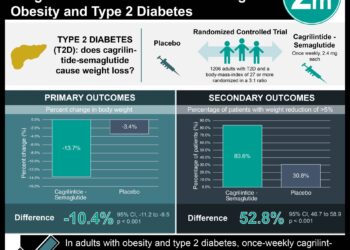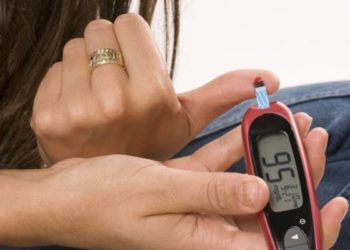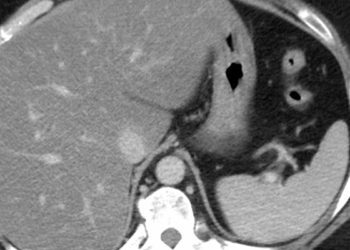Use of sodium-glucose transport protein 2 inhibitors associated with lowered incidence of gout in patients with type 2 diabetes
1. The use of sodium-glucose transport protein 2 inhibitors in patients with type 2 diabetes was associated with a lowered incidence of gout compared to dipeptidyl peptidase 4 inhibitors.
2. The benefits of sodium-glucose transport protein 2 inhibitors in achieving a lower gout risk among patients with type 2 diabetes were not significantly different across subgroups.
Evidence Rating Level: 2 (Good)
Study Rundown: The use of sodium-glucose transport protein 2 (SGLT2) inhibitors is currently one of the main classes of therapeutic agents used in patients with type 2 diabetes (T2DM) and has been shown in previous trials to have secondary metabolic effects in lowering blood urate levels. However, the association between SGLT2 inhibitor use and the incidence of gout is not well established. This study retrospectively analyzed patients with T2DM from Taiwan’s National Health Insurance database to assess the association between SGLT2 inhibitor use and the risk of gout incidence compared to dipeptidyl peptidase 4 (DPP4) inhibitor use in this patient population. The main endpoint was a diagnosis of gout based on the International Classification of Diseases, Ninth Revision, Clinical Modification (ICD-9-CM) and the International Statistical Classification of Diseases, Tenth Revision, Clinical Modification (ICD-10-CM). Multiple Cox proportional hazards regression models were used to calculate hazard ratios (HRs) and 95%CIs. Among 47,405 pairs of patients with T2DM, there was a significant risk reduction (11%) in the incidence of gout in patients who received an SGLT2 inhibitor compared with propensity score-matched individuals receiving DPP4 inhibitors, particularly for patients using dapagliflozin. In addition, benefits of SGLT2 inhibitors in achieving a lower gout risk among patients with T2DM were not significantly different across subgroups. These findings suggested that use of SGLT2 inhibitors in patients with T2DM was associated with a lowered gout incidence compared to DPP4 inhibitors. A limitation of this study was that detailed laboratory values such as blood urate levels, crucial to the assessment of gout diagnosis and control, were not included in the database, resulting in a purely clinical association between SGLT2 inhibitors and incidence of gout.
Click to read the study in JAMA Network Open
Relevant Reading: SGLT2 inhibitor lowers serum uric acid through alteration of uric acid transport activity in renal tubule by increased glycosuria
In-Depth [retrospective cohort]: This cohort study included 231,208 patients (113,812 [49.22%] women; mean [SD] age, 61.53 [12.86] years) with T2DM from the Taiwan National Health Institution databases between May 2016 and December 2018, with data analysis completed in June 2021. Among them, 47,905 individuals received SGLT2 inhibitors and 183,303 received DPP4 inhibitors, where 47,405 pairs of patients were included in the 1:1 matched analyses. Overall, the incidence of gout was 20.26 per 1000 patient-years for SGLT2 inhibitor users and 24.30 per 1000 patient-years for DPP4 inhibitor users. After adjusting for potential risk factors in the propensity score-matched population, SGLT2 inhibitor use was associated with a lower risk of gout (HR, 0.89; 95%CI, 0.82- 0.96) compared with DPP4 inhibitors, particularly in patients receiving dapagliflozin (HR, 0.86; 95%CI, 0.78-0.95). This was further confirmed by sensitivity analysis using the ICD-9-CM or ICD-10-CM code for gout-related medication showing a significantly lower risk for gout incidence of 15% with SGLT2 inhibitors (HR, 0.85; 95%CI, 0.74-0.97). Lastly, benefits of SGLT2 inhibitors in achieving a lower gout risk among patients with T2DM were not significantly different across subgroups.
Image: PD
©2021 2 Minute Medicine, Inc. All rights reserved. No works may be reproduced without expressed written consent from 2 Minute Medicine, Inc. Inquire about licensing here. No article should be construed as medical advice and is not intended as such by the authors or by 2 Minute Medicine, Inc.







